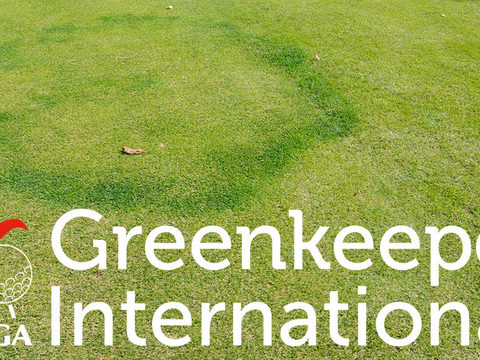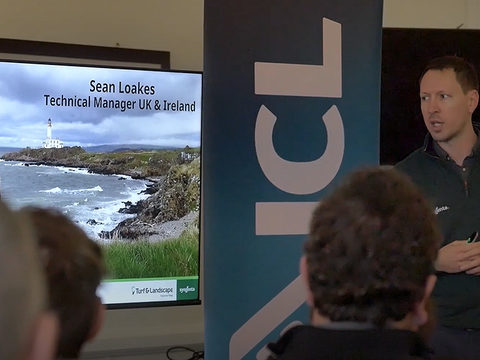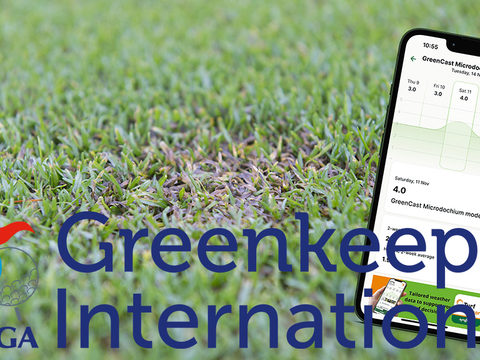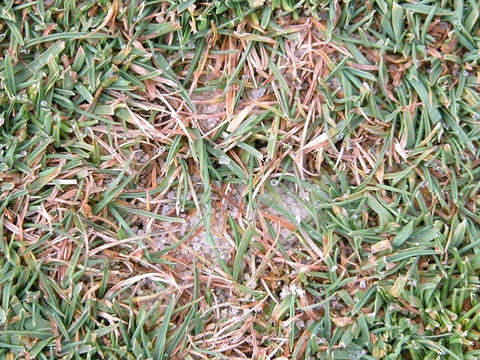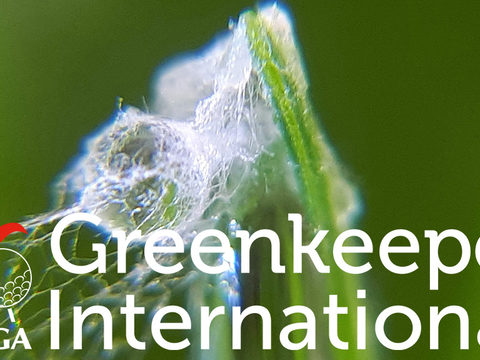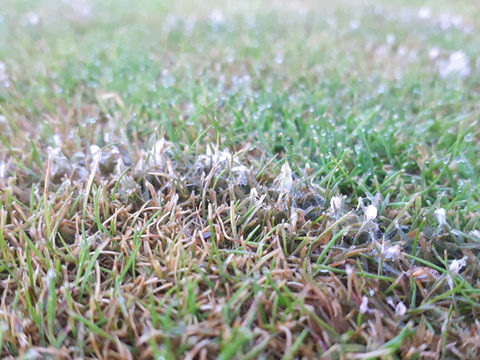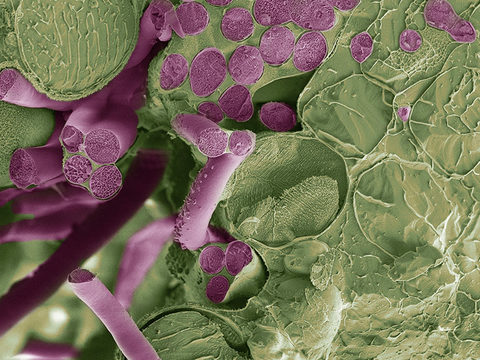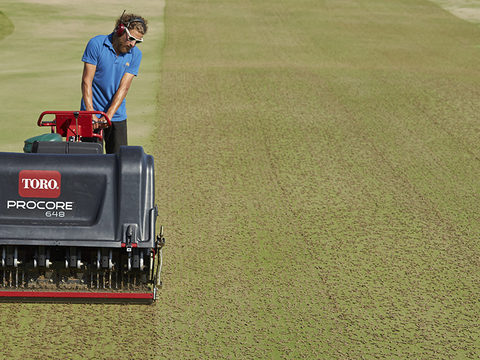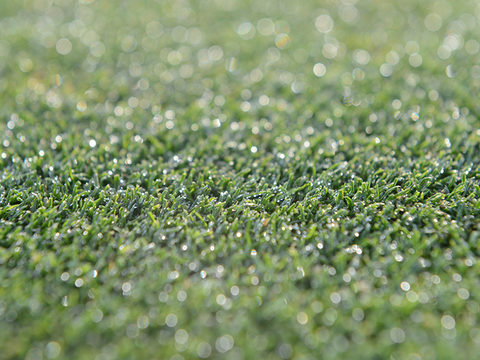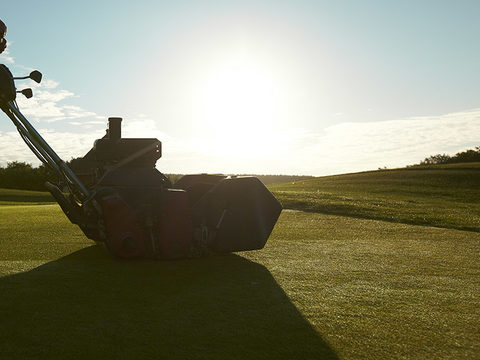Dynamic disease control
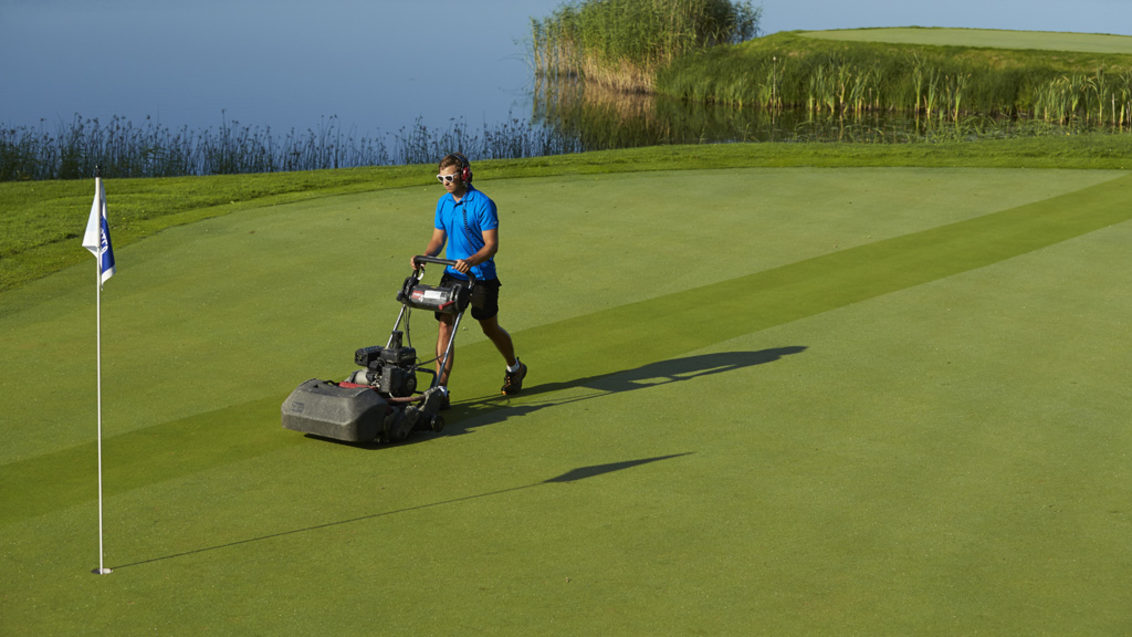
Syngenta Turf Technical Manager, Marcela Munoz, highlights the challenges of dynamic disease populations within turf surfaces, and the role of the new Instrata Elite fungicide to tackle infection outside and in the leaf.
As turf mangers we strive to produce the most consistent playing surfaces possible, which perform the same day in-day out. However, turf is a living organism, subject to a whole host of outside influences that act on each individual plant that conspire to create variability and differences.
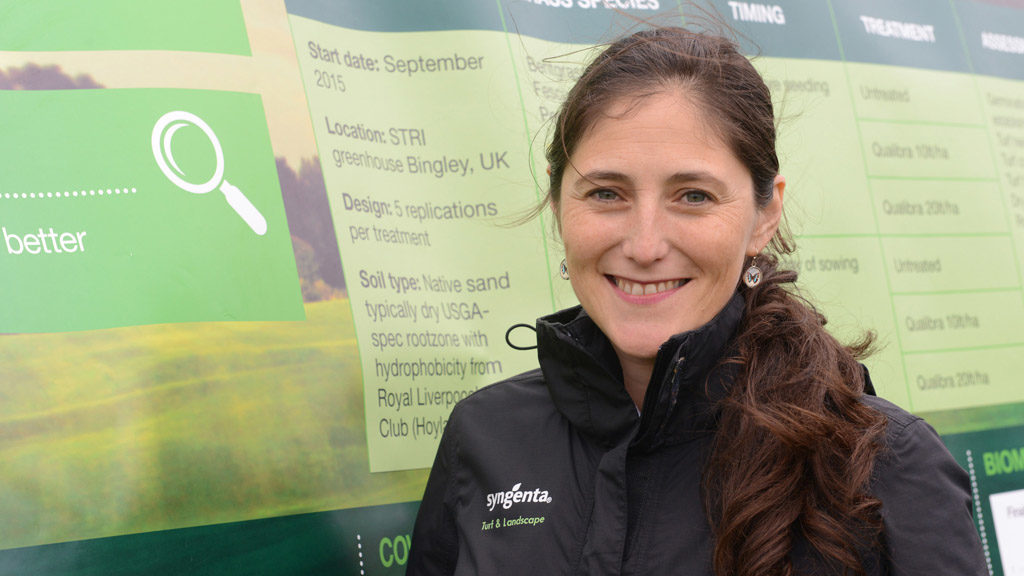
The skill of the greenkeepers and groundsmen is to use all their knowledge, experience and available tools to manage the outside influences as well as possible to mitigate their effects. It’s a constantly changing and shifting balance, writes Marcela (above).
Furthermore, the disease pathogens that attack turf are equally dynamic, affected by variable outside factors and at different stages of development during any infection.
In the lab or under strict trials conditions we can focus on disease at specific points in its life cycle and development.
In the field, however, all disease populations will be at various stages and offer us difficult challenges to manage and control.
If we look at the most common disease on golf courses, Microdochium Patch (Fusarium), for example, we will typically find resting spores in the thatch; spores deposited on the leaf surface by wind or rain splash; recently germinated spores growing mycelia and seeking an entry point into the leaf and, if we cut into a look inside the leaf, hyphae working through the leaf cells that will sap energy from the plant and cause damage as it develops.
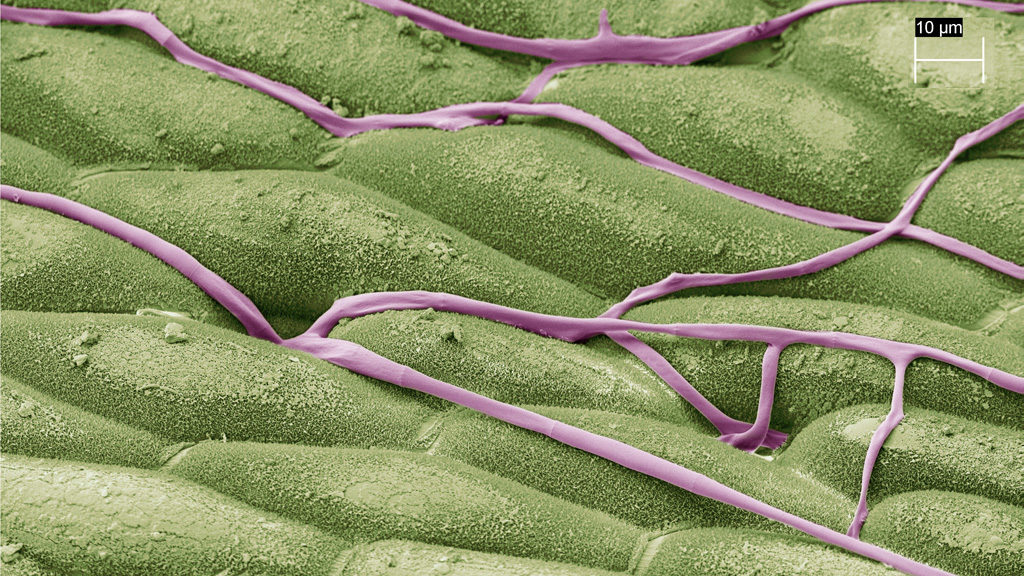
Where disease goes unchecked, either by the plants own defence mechanisms or a fungicide treatment, we may even see it completing its life cycle and breaking out thorough the leaf surface to release more spores – often resulting in serious loss of turf quality.
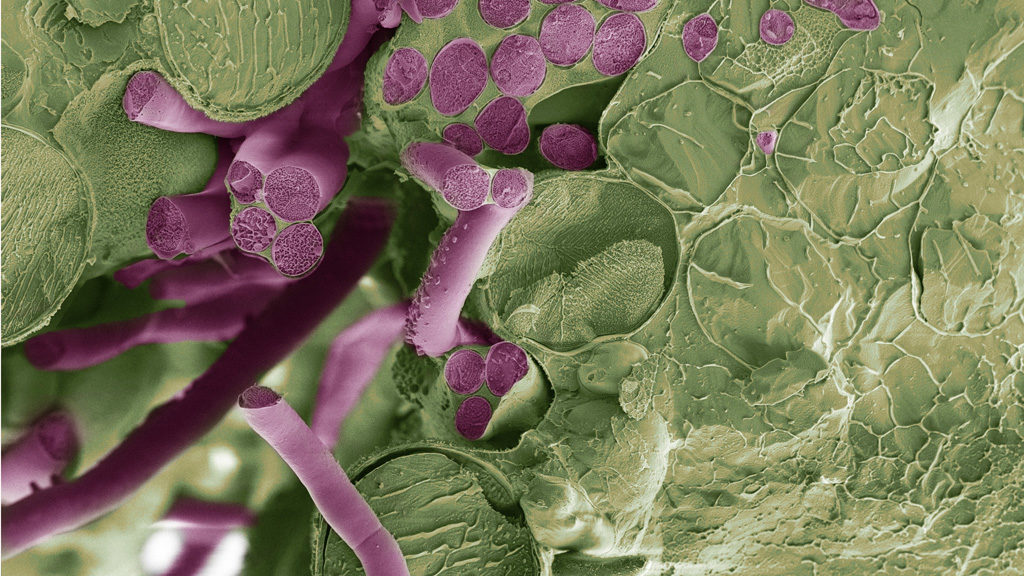
We face the challenge of these dynamic disease populations, which dictates the way we can manage the turf. There are two key elements to how we can achieve this:
- Improving the health of turf so it is better able to withstand the effects of the disease
- Well timed fungicide applications appropriate to the stage of the disease life cycle
Turf that is damaged, weakened or stressed is inherently more susceptible to infection, and will suffer more severely from any disease attack. Cultural controls, as part of an Integrated Turf Management programme, can have a significant impact in reducing both the risk and severity of disease, as well as helping plants to recover faster from any attack.
Things to consider to enhance plant health include adequate nutrition; sufficient soil moisture; developing a strong root mass and promoting leaf chlorophyll levels.
ITM will also include making conditions unfavourable for disease, for example, improving drainage and aeration; increasing air flow and light to surfaces and the removal of thatch.
However some actions, necessary for turf management, could increase the risk of disease attack, such as mechanical damage during aeration, or feeding to avoid Anthracnose risk that could make encourage soft leaf growth more susceptible to Microdochium infection.
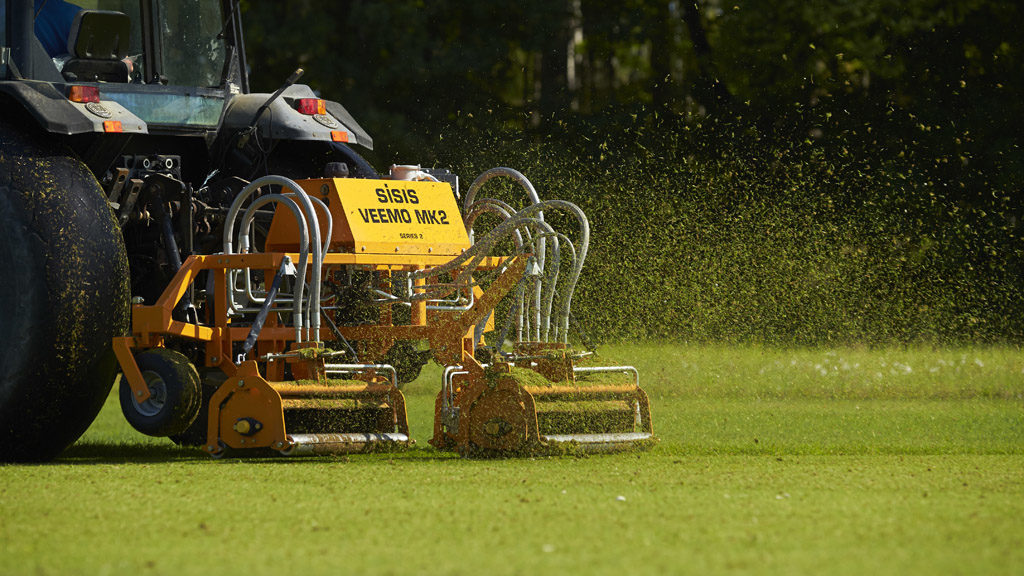
Also the daily demand of players, such as low cutting heights, to improve golf green speed, physically limits the leaf photosynthetic capability and increases stress on the plant that makes it more susceptible to infection – particularly if dull blades result in tearing, rather than a clean cut.
The combination of pressures from ever increasing demands on turf quality, along with weather patterns resulting in greater extremes and difficult conditions, almost inevitably means that, at some stage, fungicide treatments will need to be planned and built into turf management programmes.
It has long been recognised, and further confirmed by our latest Instrata Elite trials, that disease prevention delivers the best results in terms of turf quality and long-lasting results. For that we are looking to apply as close as possible to the likely time of infection, which will give us the greatest level of fungicide active on the leaf to stop disease.
The Instrata Elite trials demonstrated the potential to achieve almost total control of disease for up to six weeks from application when there was little or no visible disease at the time of treatment (Fig 1).
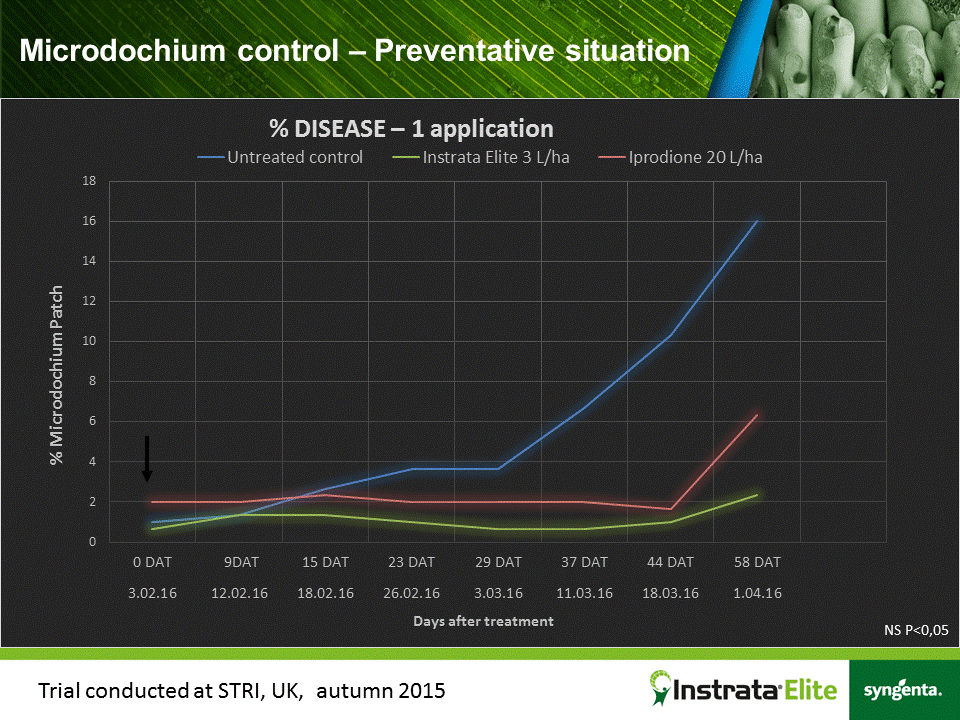
Fig 1. Applied preventatively, Instrata Elite delivered long-term disease control. When pressure increased and disease broke out to cover 16% of the surface on untreated greens area, Instrata Elite continued to hold back infection at just 2% that was significantly better than the industry standard, iprodione.
Using the GreenCast disease forecasts, in conjunction with local knowledge and experience of conditions when disease is likely to break out and historic records of disease risk, can prove instrumental in better proactive prevention of disease.
STRI research has shown that fungicide application timing based purely on GreenCast disease forecasts could maintain better turf quality through the season using fewer fungicide applications, compared to either routine treatments or application at the first visible signs of disease.
In practice, the duration of any disease protection and frequency of fungicide applications will be dictated by disease pressure as a result of prevailing weather conditions, and the underlying health of the turf. If ITM measures have been effective and turf is strong and healthy, the duration of control could be significantly extended – and we have had reports of completely clean turf for eight to 10 weeks from an Instrata Elite treatment programme. However, in difficult conditions and under high disease pressure, it has to be recognised that fully effective control might be significantly shorter and retreatment may be required in as little as three to four weeks.
One of the key advances with Instrata Elite to tackle a more dynamic disease populationis the combination of actives that give the ability to target Microdochium outside and in the leaf. Whilst the fludioxonil coats the leaf surface and prevents germinating spores from penetrating stomata or cut leaf ends to get into the plant, the propiconazole element is active within the leaf to stop disease developing inside.
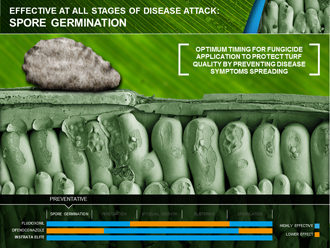
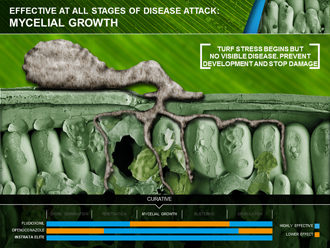
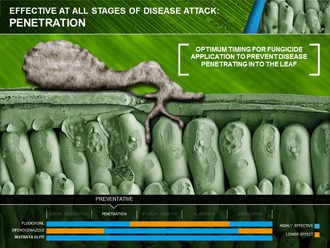
The STRI trials results also showed (Fig 2.) that applications once early symptoms are visible is not as good as a preventative treatment on clean turf, but for greenkeepers and groundsmen in a practical situation – where weather conditions or player pressures may have delayed an optimum application timing – the early curative activity is an incredibly valuable asset.
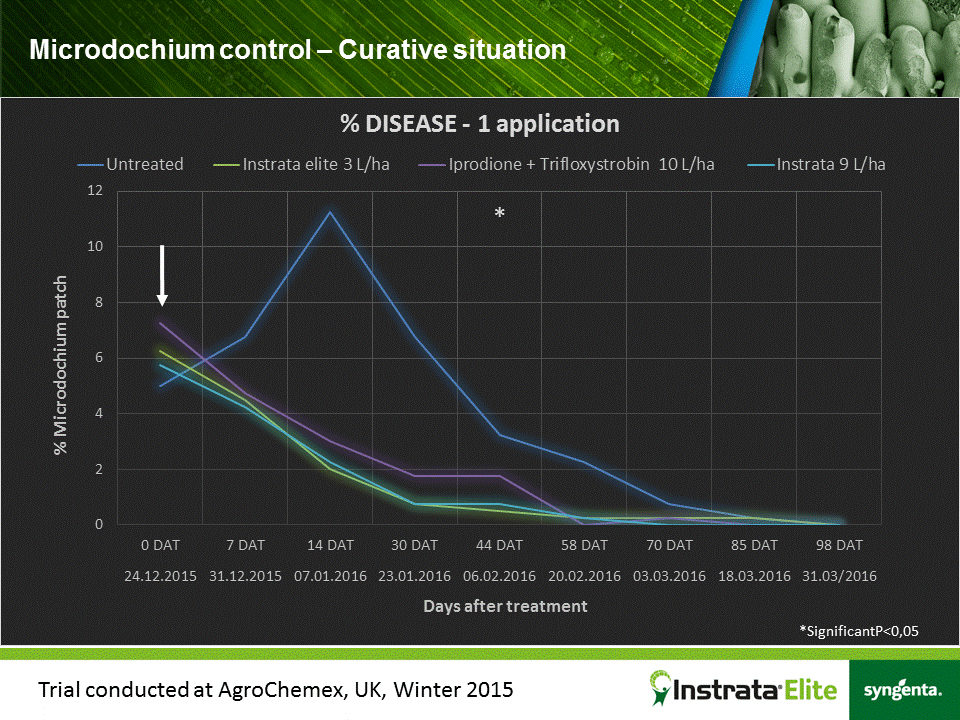
Fig 2. On greens showing 6% surface area affected at the time of treatment, Instrata Elite prevented further development of disease, and protected turf that allowed clean regrowth and surface recovery. Within two weeks of application the affected surface area had shrunk back to 2%, and continued to decline as turf quality improved. On untreated areas, infection spread to reach over 11%.
For greenkeepers using indicator greens as a guide to application timing, it offers an essential flexibility to be able to target the diversity of disease pathogen stages that will inevitably be present on other greens when early infection is seen.
And with a dynamic disease population, any application at an early curative stage also needs the dual action to target and prevent spores from developing to stop immediate reinfection and give long-lasting results.
With the spore acting fludioxonil, there is the chance to eliminate disease spores surviving in the thatch that will reduce the risk of outbreak from rain splash in high pressure wet and humid weather conditions – typical of autumn or early spring timings best suited to Instrata Elite applications.
With the benefit of an effective ITM programme and a planned fungicide strategy - with the flexibility to tailor to in-season conditions – it is now possible to proactively prevent disease attacks and minimise damage. This approach also ensures turf can recover quickly and maintain the consistent surface conditions right through the season.

